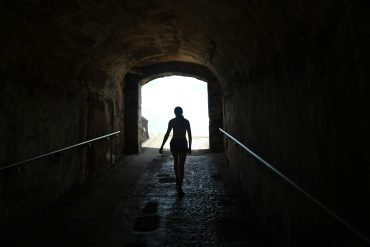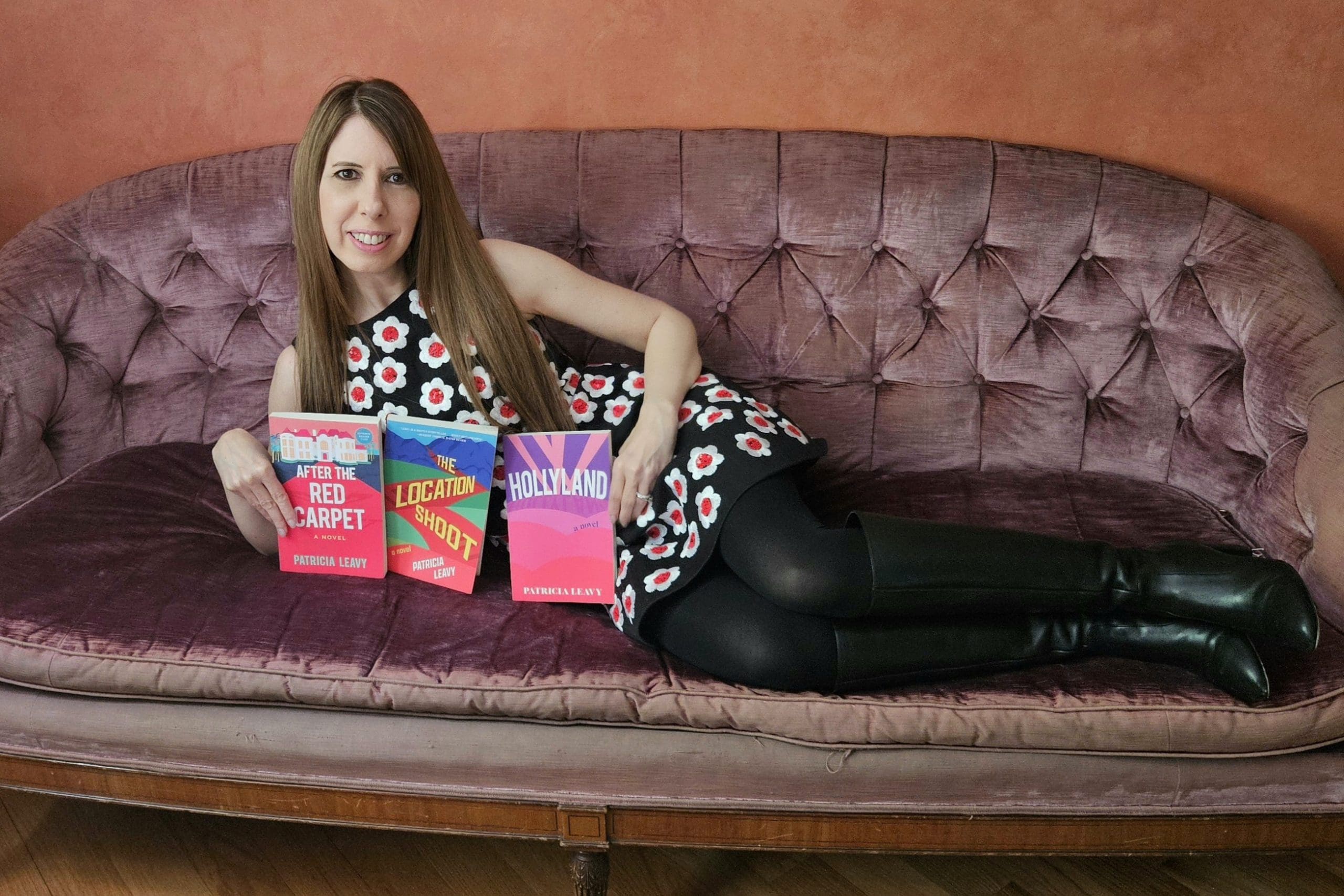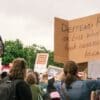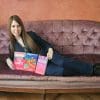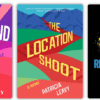My Career Part One: Philosophy of The Arts
The Work of Writers
Interviewers often ask me what my goal is with my body of work. I’ve always simply written books I’ve wanted to read. My nonfiction texts have each resulted from my own search for a book on a certain topic, written in a certain way. When no such book exists, I write it. There’s no better way to learn about something that writing a book. The same has been true for my fiction. I create story worlds I want to crawl into, populated by people I want to spend time with for any number of reasons. I write novels that hold my hand, teach me lessons, provide comfort or hope.
There’s also a larger goal underscoring my work. I aim to create a philosophy of the arts and a philosophy of love. For years, I’ve turned to fiction as my primary vehicle. Novelists document the world and our experiences. We chronicle. Novelists also reimagine. We show how the world could be. In my fiction, I attempt to do both.
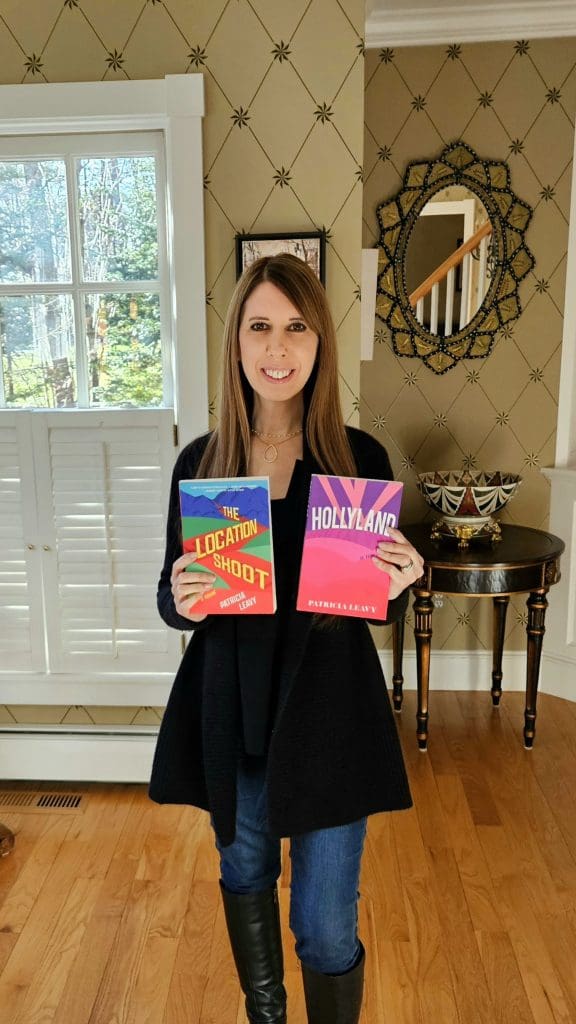
Philosophy of The Arts
I try not to get too wrapped up in what people say about my work, good or bad. Having a relationship with your work that isn’t dependent on anything external is vital for creatives. It allows us to keep creating while remaining true to our voice and vision. Therefore, I rarely refer to what others have written about my work. However, I share the following from a piece written by the poetry editor for The Napkin Poetry Review (2022) because it made me feel seen.
“Viewed together, Leavy’s fiction and nonfiction serve to reinforce each other. Art is upheld as more than a pastime: it is a way of knowing. As many of the main characters in her novels are writers, artists, and intellectuals themselves, the world is portrayed through an inherently creative lens, further demonstrating the impact of art on our lives. Leavy is creating a rich philosophy of the arts through her literature. Her philosophy is heard clearly, and the reader isn’t left to parse through dense language to find it. Instead, they’re drawn through beautiful stories they look forward to reading.”
The truth is that all my novels, beginning with my debut, have narratives about the arts. When they are all put together, a full philosophy of the arts emerges. Many of my characters are writers, editors, publishers, actors, artists, and scholars. Works of art—paintings, films, music—feature prominently in my novels, and never accidentally so. Scenes often take place in art galleries, museums, theaters, bookshops. Sometimes the arts narrative is part of the plot, or woven into dialogue, or a subtext, or used for symbolism. The art may be that which exists in the world, or that which was created for the story world, sometimes by the main characters.
The truth is that all my novels, beginning with my debut, have narratives about the arts. When they are all put together, a full philosophy of the arts emerges.
In reflecting on my fiction catalog, distinctions can be made between my earlier and later work. The arts narrative in my early novels focuses on art and identity. Characters are often shown consuming art—bathed in the glow of screens— using art to make sense of their lives, or making art as a means of self-expression and self-actualization. In my later works, there are more complex narratives about art and life imitating each other, the intrinsic value of the arts, the nature of controversial or Avant Garde art, artists and art, what it means to be an artist, the arts in society, and the power of art to heal, connect, and help us to reimagine our lives.
Space does not permit me to offer examples from each of my novels, so I have selected a handful from throughout my catalog, beginning with my debut. These brief excerpts in no way capture the full arts narrative in any of these novels, but rather offer a glimpse. In many cases, I’ve held back some of my favorite moments so as not to spoil major plot points.
Low-Fat Love: Art Consumption and Identity
My debut novel, Low-Fat Love, explores women’s attraction to those who withhold their support, toxic relationships, low self-esteem, and the effect of commercial pop culture on women’s psyches. Prilly Greene lives between who she is and who she longs to be. She moved to New York City in search of a “big life.” Despite her job at a publishing house and weekends spent racing around the city, she’s painfully lonely. She falls for Pete Rice, an unemployed, charming, ever-sexy aspiring graphic novelist.
Prilly thinks she is finally experiencing the big life she always sought but feared was beyond her grasp. Pete’s unconventional, free-spirited views on relationships unsettle Prilly, ultimately causing her to unravel over the course of their on-again, off-again love affair. Meanwhile, Prilly is at odds with her co-worker, Janice Goldwyn, with whom she has a love-hate relationship. Low-Fat Love is a novel about the struggle to overcome the secret fear that we are not enough so that we can reimagine ourselves and truly live a “big life.” Pop culture is used as a series of signposts throughout the novel to explore the characters’ social psychological processes.
Please note all excerpts are from Low-Fat Love: 10th Anniversary Edition, which I consider the definitive version of this novel.
An excerpt from a scene, of many, of Prilly in her apartment watching television (pp. 4-5).
That night when Prilly entered her apartment she immediately kicked off her comfort heels and slipped on her at-home uniform: Old Navy black pajama pants and worn out Ugg boots. She poured a glass of Beaujolais and lay on the couch. Remote in hand, she flipped between her usual stations and landed on Access Hollywood. They were featuring a story about Brad Pitt and Angelina Jolie. She always bought tabloids when they were on the cover. Although she despised the idea that they were mostly adored for their good looks, she was fascinated. Sometimes she fantasized about what Angelina’s life was like.
More than any other celebrity, Angelina seemed to have it all. She was ridiculously gorgeous, the kind of beauty that doesn’t seem to go out of style or age. She had lived a wild life, and now she had a massive, multicultural family (that she probably never had to take care of with all her nannies, assistants, and so forth), a fabulous partner who undoubtedly worshipped her, and an amazing career. Somehow she had managed to be both an artist and a commercial success, or at least she could reasonably claim to be both. People admired her. People like Prilly. As Prilly watched the story she felt a familiar storm cloud of envy, longing, and self-loathing.
Access Hollywood was just the prelude to whatever “movie of the week” she could find. Tonight she was watching a Lifetime movie about a woman who worked as a newspaper reporter and, while reporting on a local crime, became the next target of a psychopath. As Prilly picked up each forkful of the vegetable stir-fry she made during the commercials, she couldn’t help but think, In some ways the reporter is lucky. At least her life is exciting.
An excerpt about Prilly and her interest in the arts (p. 15).
Without many friends to go out with and no real effort made at dating, her life was fairly lonely. She decided to invest energy into her weekend routine. Convinced that if you lead an interesting life you will meet interesting people, Prilly made being interesting her full-time weekend occupation. For her, there was nothing more interesting than the arts. Had she been braver, she might have been some sort of artist, or at least a journalist. She took to surrounding herself with the products of others’ bliss. The monotony of the workweek was soon juxtaposed to weekends of ballet, theatre, concerts, gallery openings, craft markets, spoken word performances, independent films, museums, and poetry readings. It was exhausting.
An excerpt after their breakup when Prilly is watching a French film Pete had recommended (pp. 146-147).
She had never been able to escape the “tinsel heart” remark until now. Until she realized, It wasn’t his original thought. It was a line he lifted from a movie. Suddenly she couldn’t stop wondering which other ideas he had espoused that weren’t his own. That weekend, she watched the other films and Googled the many authors, artists, and books he had urgently recommended. Soon she realized that most of his ideas were derivative of someone else’s, including his supposed insights about the artists they had seen, like Fairey and Modigliani.
There was very little he’d ever said about art or philosophy that developed in his own mind. Even his ideas about love and relationships and being “in the moment” were rip-offs from one of his favorite authors, whom Prilly had never bothered to read before. Sunday night she watched the “tinsel heart” scene one more time and vowed never again. It was freeing. She felt stronger than she ever had before.
Film Blue: Art Consumption, Art Making, and Identity
Film Blue is about that time in life when our choices aren’t set, and there are endless possibilities. What is that road like for creatives? How is it different for women? How do past #MeToo experiences shape women’s dreams and present obstacles even years later? A couple of years after finishing college, Tash Daniels has put her love of filmmaking on the back burner. She’s working retail, club-hopping, and scraping by to pay the rent. Usually attracted to the wrong guy, she’s at a loss when she finally falls for the right one. Sexy deejay Aidan is living his life authentically as an artist and encourages her to do the same. Will she open her heart?
Will she bet on herself and her dreams? Is a girl with a dream truly on her own in the world? Tash’s friends are along for the journey: Jason Woo, lighthearted model on the rise; Penelope Waters, earnest graduate student with a secret no one suspects; Lu K, fiercely independent hot-girl deejay; and Monroe Preston, the glamorous wife of a Hollywood studio head. Frequently bathed in the glow of the silver screen, the characters show us how the arts can reignite the light within, pushing us to confront our fears so we can choose how to live in the present. With a tribute to 1980s pop culture set against the backdrop of contemporary New York and Los Angeles, Film Blue celebrates how the art we experience and make can shape our stories, frame by frame.
An excerpt from when Tash and Aidan are on a date, walking around an art gallery in Soho (pp. 47-49).
“Come here,” she said, pulling him into a gallery featuring Andy Warhol prints.
“Warhol was ahead of his time,” Aidan remarked as they walked through the gallery.
“I know. Can you imagine what he would say about reality television?”
“He predicted it. I don’t think he’d be surprised in the least.”
“Uh huh. I love the Marilyns,” she said, stopping in front of one of Warhol’s most iconic pieces.
“Of course you do, beauty queen.”
“Shut up,” she said, playfully punching his arm. “I saw a documentary about her in college. Did you know when she talked to reporters she used to say, ‘Would you like me to be her for you?’ or something like that. She was in complete control. Marilyn was a character she created.”
“Or one side of her personality,” Aidan suggested.
“Exactly. It was like she was able to hold on to both Norma and Marilyn.”
“But kind of fucked up if she never integrated them, right? I mean, living as two people instead of one whole person can’t be easy. Maybe that’s why she…”
“Oh don’t even say it. I never believed she killed herself.”
He smiled. “Neither did I, but that doesn’t mean she was happy.”
‘He smiled. “Neither did I, but that doesn’t mean she was happy.”
Tash shrugged.
“That’s what was so brilliant about Warhol. He captured the lie and shoved it in everyone’s face, decorated in bright, psychotically happy colors.”
“Can I tell you something?” she asked, turning toward him.
“Of course.”
“You know how some people have this romantic notion of New York in the 1920s?”
“Uh, rich white people might.”
“Shut up,” she said, punching his arm harder this time.
“I’m just kidding. Yeah, I know what you’re talking about. People who read a lot of Edith Wharton or whatever.”
“Well, I have this romantic notion of New York in the 1980s. I think that’s why I’ve been so obsessed with the movies lately. My medium has always been film; it’s how I connect with different times and ideas.”
He smiled. “You always light up when you talk about film.”
She shrugged. “Anyway, I have this love of New York in the 1980s, you know when the Mary Boone Gallery was the hottest place in SoHo, not a freaking H&M or whatever. The time of Warhol and all of those pop visionaries.”
“You know who I love from back then? Jean-Michel Basquiat. Nobody blurred graffiti and art like that before he did. He was exposing the lie too, I think, but in his own way. I think the bullshit is really what killed him.”
“Totally. I’m telling you, when Mary Boone closed her SoHo gallery and opened on Fifth Avenue, something died forever.”
They smiled at each other and finished their tour of the gallery.
An excerpt from when Tash is at home watching television, after she and Aidan broke up. He had said there are two versions of her (pp. 117-118).
Tash went to the kitchen for a diet cola and tub of microwave popcorn before going to her room. She changed into her most worn-in cotton pajamas and crawled into bed, propped up against pillows. She cycled through the channels, searching for something to watch, came across the end credits for Rainbow Bright, and was curious enough to stop. Jason’s a trip. Too funny, she giggled. Before she could change the station, Jem and the Holograms came on, catching her attention.
The aesthetic is fantastic, she thought, instantly riveted. What a dope look. Such great colors. God, imagine this aesthetic in a live-action suspense flick. It would be like pop noir. J was right. This stuff is inspired. After acclimating to the fashion and vibe, Tash became immersed in the story. The idea that one woman had two distinct personas, the glamorous Jem and the responsible, orphan-raising Jerrica, resonated deeply. They keep acting as though Jerrica is real and Jem is an illusion, but they’re both real. That’s why Rio loves them both. He’s kind of a douche, cheating or whatever, but he can’t help it. Together, Jem and Jerrica are like the perfect woman. No wonder their superhuman, cyborg savior is named Synergy. Brilliant.
She watched the Jem and the Holograms marathon for hours, relating to the two-persona lead character more than any real person she had ever known. They shared a bond. All night her thoughts vacillated from Jem to her conversation with Kyle. She kept replaying his words, “It’s not who you are. That’s how you acted to look like you were having fun.” Every time there was a scene with Rio, she transposed Aidan’s face on his. Eventually she fell asleep, with the glow of the television beaming like a halo around her face.
An excerpt from a scene with Tash and Aidan. He just got a huge break in his musical career and is going on tour for the summer. Tash’s short film has been rejected from festivals and she can’t get grant money for the longer version. Aidan is encouraging her not to abandon her film work. (pp. 151-152).
“Don’t forget that you took that job to leave time for your film work.”
She rolled her eyes. “Being rejected doesn’t fill as much time as you’d think.”
“Remember, be open to whatever form it comes in. That gallery was interested in showing your film. That could be another path.”
“Yeah, but I blew them off. Fucking kills me now. At the time, I was so focused on festivals. Everyone in the classes I took said that’s the way you do it, that I’d never get future backing for the longer version unless I went that route. But if you’re not the professor’s pet student, you don’t get the support you need for that either.”
“There’s more than one gallery in town. For that matter, there’s no reason you can’t pitch to New York galleries, or Boston, Chicago, or a fishing village in Maine. Just saying.”
‘She rolled her eyes. “Being rejected doesn’t fill as much time as you’d think.”
Tash furrowed her brow.
“Okay, well New York at least. My point is that it’s truly a piece of art. I mean, it’s stylized, totally pop noir like you intended. The black and white with those eighties pops of color – I think it’s brilliant. Films like that can do well on the art scene. You know that better than anyone. That’s what you said years ago when you first had the idea, before the people here got in your head. Maybe you should let it be what it is and not worry about what it’ll lead to. Carve your own path.”
“Maybe. Sometimes I think I should just bag it all. I don’t know if I want to put myself out there again.”
“It’s tough, I know, but I remember how happy you were working on it. Even when it wasn’t going perfectly, and even during those brutal editing months, you were alive. Just do me a favor and promise you’ll think about it.”
“I’ll think about it,” she said, reaching her arm across the table. Aidan rubbed her hand.
An excerpt from a scene in which Monroe Preston stops to look at her Warhol painting of Marilyn Monroe. Monroe had come from nothing, changed her name, and ended up marrying a rich and powerful Hollywood executive (p. 185).
She stopped in front of the Andy Warhol rendition of Marilyn Monroe. Bill had bought it at auction for her thirtieth birthday. It was the best present she had ever received. He said everyone would be famous in the future. Wonder if he ever said anything about being near the famous. It’s not quite the same thing, is it Mr. Warhol? And what about you, Marilyn? Poor, haunted Marilyn. It’s not so easy to be two people, is it? It’s like being no one at all.
What did Hollywood do to you? Did fame help you escape Norma Jeane? I guess it wasn’t as glamorous as you hoped. I do wonder, though, were you truly and deeply unhappy or did you just wake up one day feeling somehow outside of the moment and outside of yourself? She ran her fingers along the frame and suddenly had a thought that was entirely new to her. Could it be that I’m living the shadow side of my own life?
An excerpt from when Monroe is suffering from depression and profound sleep deprivation. She watches Tash’s short film in her home theater (p. 240).
Monroe settled into one of the raspberry-colored velvet seats in their lavish private screening room. Henry switched the lights off as the film began. Light from the screen flickered on Monroe’s face as the opening credits rolled. Shot in black and white, the camera zoomed in on two young people on a city rooftop in the middle of the night. They were laughing and running across the roof, bits of paper swept up in the breeze. A burst of hot pink leapt off the screen, followed by eruptions of turquoise and purple.
Monroe leaned closer. The corners of her mouth trembled and a smile began to crawl across her face. She leaned closer and let the glow from the screen wash over her. Her smile morphed into laughter and tears flooded her eyes. As her smile grew and her laughter became louder, the tears flowed harder. Her face was drenched by the time the closing credits rolled. She sat, soaking in a feeling she couldn’t quite name, a feeling she knew was connected to life itself.
Hollyland: Art and Entertainment
Perhaps my most explicit dive into penning my philosophy of the arts is in my novel, Hollyland, written during the 2020 lockdown as a means of escape. The protagonist, Dee Schwartz, is a writer and arts researcher. She falls in love with Ryder Field, a famous actor descended from Hollywood royalty. Through Dee’s character, and Ryder’s Hollywood world, I was able to weave a story about the arts into the novel. Hollyland is very much a feel-good romance about living with passion.
My hope is that the book also raises questions about the value we do or do not place on art, distinctions between art and entertainment, whether artists must compromise to be successful, what the arts bring to our lives, the nature of controversial art, the relationship between art and science, the joy to be found experiencing or making art, and who the real movie stars are on the big screen of our lives.
Here are a few excerpts that offer a window into the narrative about the intrinsic value of art, art versus entertainment, and the bravery in making art.
An excerpt from the conversation between Dee and Ryder during their “meet cute” in the opening chapter (pp. 2-3).
“I love art more than anything; it’s sacred to me. Artists need to be free. Art shouldn’t have to apologize for itself. It should provoke, inspire, unsettle, and disrupt—or at least aspire to,” she explained.
“What about entertain?”
“Sure, that too. Of course, art and entertainment aren’t always the same thing, are they?
He looked at her intently as if she had just asked a question that he had been asking himself for years.
She continued, “I just mean that as soon as you’re thinking about entertaining, you’re thinking about audience. Sometimes art gets watered down to appeal to the masses or to placate the people holding the purse strings. It’s hard to be truthful or to follow your own creative heart if you’re too concerned by what others might think. Let’s just say that I’ve never been terribly interested in what’s trendy. There’s no place for that when making art.”
An excerpt from a conversation between Dee and Ryder the first time he visits her home (p. 37).
“New York Times best seller, wow,” he said. “I didn’t realize. I mean, you didn’t mention . . .”
“Those things don’t matter to me,” she replied. “Accolades don’t change what’s on the pages of the book. That’s all that matters. God help any artist who cares about sales or reviews.”
An excerpt from a conversation at a restaurant between Dee and several Hollywood stars and a movie director (p. 62).
“… Luckily, I’m not interested in what they think. I make art simply because it brings me joy. There’s no other reason.”
Sloane smiled faintly and the table fell silent, as if they were all contemplating what those words meant in their own lives.
“Honestly, I was just looking for a creative means of uncensored expression. I didn’t consider what anyone would think. The reason I started writing poetry and novellas instead of some other, more popular forms was because hardly anyone reads them,” Dee explained.
“Yet your poetry collections and works of fiction have all become best sellers. Seems as though people do read them, critics too,” Oliver said.
“Yeah, it was a flawed plan.”
Another excerpt from a conversation at a restaurant between Dee and several Hollywood stars and a movie director (p. 77)
She paused, looked around the table, and said, “I love and see value in all art. Children’s art, street art, doodles in someone’s scrapbook, novice actors on community theater stages. I find beauty in it all. Some of my favorite artists are people you’ve never heard of. There’s so much unrecognized talent.”
An excerpt from a party scene where Dee introduces one of her arts friends to Ryder (the artist has earlier been identified as the most famous street artist in the world, a Banksy type) (pp. 139-140).
Dee introduced one of her friends as “Charlie, a talented street artist.” After he walked away, Rye asked, “What kind of street art does he make?”
“Oh, you’d know it. “
“He’s not . . . Green? The Green?”
Dee nodded and said, “Shh, his identity is secret. Besides, I hadn’t a clue who he was when we first met. Didn’t matter to me. Talent is talent. Courage is courage.”
The Location Shoot: The Art and The Artist
The Location Shoot is by far one of my favorites, if not my favorite. I wrote it during the 2020 lockdown. Due to the pandemic, I was thinking about the big questions of life, and so the novel is about a group making a film about the meaning of life. An eccentric filmmaker is shooting a film in Sweden over the summer where he lives in an inn with the lead actors. Before arriving in Sweden, we get a glimpse into the lives of the actors in the cast—each at a personal crossroads. The filmmaker invites his friend Ella Sinclair, a beautiful, free-spirited, provocative philosopher to join them for the summer.
Hollywood star Finn Forrester is instantly enchanted by her and the two fall madly in love. Meanwhile, the film they’re all making is about the meaning of life. The subject of the film and the deep bonds the group builds over the summer push everyone to reflect on their own lives. When the shoot ends, each returns home, changed. The group reconvenes months later on the red carpet at the Cannes Film Festival and all questions are answered. The Location Shoot is about love, living with passion, what it means to make art, and art imitating life. I’m reluctant to share too much from this novel, so as not to spoil anything for readers, so I’m including one excerpt.
An excerpt from a conversation between Finn and Ella about controversial French filmmaker, Jean Mercier (pp. 85-86).
They walked quietly for a few minutes, their hands so close they were millimeters from touching. Finn finally broke the silence and said, “That was funny how you called Jean out for sleeping with his cleaning woman.”
“I doubt it’s much of a secret. Everyone knows what he’s like.”
“He has a bit of a reputation for how he treats women. You’re such a strong person and you two are friends. I was wondering what you thought as a woman.”
“People want simple answers, but life is complex. He’s created some of the greatest, most interesting, sensitive, and provocative roles for women in the history of cinema. There’s a reason so many actresses are dying to work with him. And yet, he can be quite a piece of shit to women in his own life. Tell me, which is better: the male director who never casts women or does so only in clichéd, trivial ways but may be a hell of a good guy in private, or the man who creates professional opportunities for women that wouldn’t otherwise exist and gives the collective imaginary new, powerful representations of women, but uses up women in his personal life as if they were pieces of gum he was chewing until the flavor runs out?”
“Wow,” Finn muttered. “I don’t know how to respond.”
“That’s my point. When these are the choices, what’s the answer? How do we define morality? Who’s a good guy? Who’s a bad guy? What matters, life or art? How are they related? What’s public and what’s private? Despite what many claim, it’s rarely as simple as we might wish. Life is textured.” She paused and said, “As for me, I adore Jean as a friend and as an artist, but you’d never catch me in bed with him.”
Conclusion
I hope this peek into a few of my novels gives you a sense of the philosophy of the arts I am building and why I’ve chosen to communicate these ideas through fiction. With more than a dozen published novels to date, and each including very different arts narratives, please take this as a starting point. To learn more, I hope you’ll read my novels.
Please stay tuned for Part Two of my dive into my catalog, in which I discuss a philosophy of love.
References
Leavy, P. (2011). Low-Fat Love. Sense Publishers. Rotterdam, The Netherlands.
Leavy, P. (2021). Low-Fat Love: 10th Anniversary Edition. Paper Stars Press. Kennebunk, ME.
Leavy, P. (2023). Film Blue. Paper Stars Press. Kennebunk, ME.
Leavy, P. (2023). Hollyland: A Novel. She Writes Press. Berkeley, CA.
Leavy, P. (2023). The Location Shoot: A Novel. She Writes Press. Berkeley, CA.
Patricia Leavy
Dr. Patricia Leavy is a bestselling author, independent sociologist, and internationally known arts-based researcher. She has authored, coauthored, and edited over 40 books, earning critical and commercial success in both nonfiction and fiction, and her work has been translated into numerous languages. Her work has garnered a slew of book awards including USA Best Book Awards, Independent Press Awards, International Impact Book Awards, National Indie Excellence Awards, International Book Awards, New York City Big Book Awards, Firebird Book Awards, and American Fiction Awards. Recently, her novel The Location Shoot won a 2023 Literary Titan Gold Book Award for Fiction.
She has also received numerous career awards including, the New England Sociological Association 2010 New England Sociologist of the Year, the American Creativity Association 2014 Special Achievement Award, the International Congress of Qualitative Inquiry 2015 Special Career Award, the National Art Education Association 2018 Distinguished Contributions Outside of the Profession Award, the American Educational Research Association 2018 Division D Significant Contributions to Educational Measurement and Methodology Award, and the American Educational Research Association 2022 Outstanding Achievement in Arts and Learning Award. She has also been honored by the National Women’s Hall of Fame, was presented an Award for Leadership and Humanitarian Efforts in Literature and Publishing by We Are the Real Deal, and in 2018 SUNY-New Paltz established “The Patricia Leavy Award for Art and Social Justice.” Dr. Leavy lives in Maine with her family. She loves writing, reading, watching films, and traveling.
Website: www.patricialeavy.com
Facebook: https://www.facebook.com/WomenWhoWrite/
Instagram: https://www.instagram.com/patricialeavy
She Writes Press: https://shewritespress.com/portfolio/patricia-leavy/
Guilford Press: https://www.guilford.com/author/Patricia-Leavy
Credits
Images provided by Patricia Leavy
Learn More
New to autoethnography? Visit What Is Autoethnography? How Can I Learn More? to learn about autoethnographic writing and expressive arts. Interested in contributing? Then, view our editorial board’s What Do Editors Look for When Reviewing Evocative Autoethnographic Work?. Accordingly, check out our Submissions page. View Our Team in order to learn about our editorial board. Please see our Work with Us page to learn about volunteering at The AutoEthnographer. Visit Scholarships to learn about our annual student scholarship competition.
Dr. Patricia Leavy is a bestselling author, independent sociologist, and internationally known arts-based researcher. She has authored, coauthored, and edited over 40 books, earning critical and commercial success in both nonfiction and fiction, and her work has been translated into numerous languages. Her work has garnered a slew of book awards including USA Best Book Awards, Independent Press Awards, International Impact Book Awards, National Indie Excellence Awards, International Book Awards, New York City Big Book Awards, and American Fiction Awards. Recently, her novel The Location Shoot won a 2023 Literary Titan Gold Book Award for Fiction. She has also received numerous career awards including, the New England Sociological Association 2010 New England Sociologist of the Year, the American Creativity Association 2014 Special Achievement Award, the International Congress of Qualitative Inquiry 2015 Special Career Award, the National Art Education Association 2018 Distinguished Contributions Outside of the Profession Award, the American Educational Research Association 2018 Division D Significant Contributions to Educational Measurement and Methodology Award, and the American Educational Research Association 2022 Outstanding Achievement in Arts and Learning Award. She has also been honored by the National Women’s Hall of Fame, was presented an Award for Leadership and Humanitarian Efforts in Literature and Publishing by We Are the Real Deal, and in 2018 SUNY-New Paltz established “The Patricia Leavy Award for Art and Social Justice.” Dr. Leavy lives in Maine with her family. She loves writing, reading, watching films, and traveling. https://patricialeavy.com.


